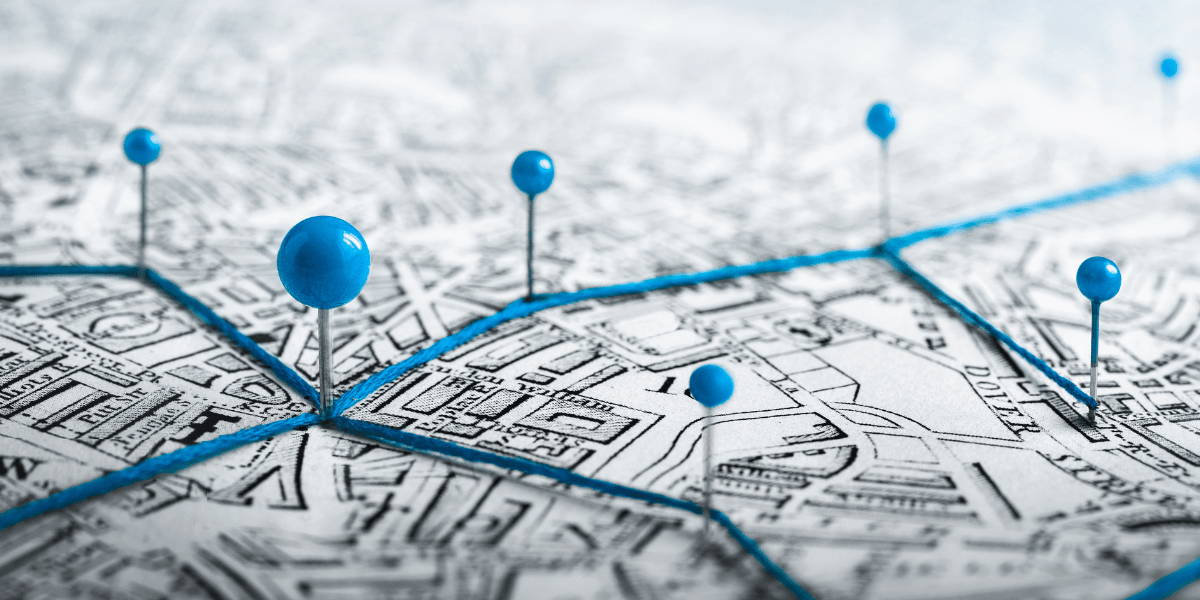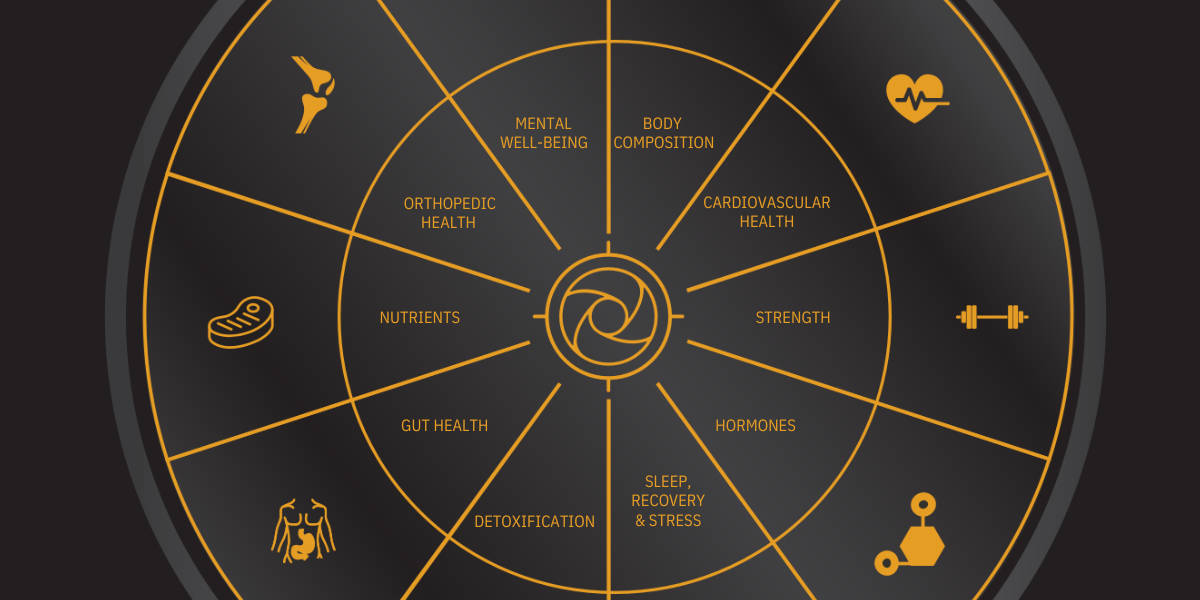Understanding the Wheel of Health: Stark's Comprehensive Approach to Well-Being
At Stark, we believe that true health encompasses far more than just physical fitness. It's about achieving a harmonious balance across all aspects...
.png?width=70&height=70&name=Stark_LogoMark%20(1).png)

If you haven't heard about the trending series Blue Zones on Netflix yet, you are bound to soon enough. Blue Zones, a term coined by National Geographic's Dan Buettner, are a captivating and enigmatic concept in the realm of health and longevity- these are geographical regions where an unusually high percentage of people live much longer, healthier lives than the global average. These longevity hotspots producing disproportionate numbers of people living past 100 are scattered across the globe, such as Sardinia (Italy), Okinawa (Japan), Nicoya Peninsula (Costa Rica), Ikaria (Greece), and Loma Linda (California, USA). These places are known for their low rates of chronic diseases, strong community bonds, and a zest for life that seems almost ageless.
As the series explains, the centenarians may be from distinctly different places, but there are some common threads that may be worth exploring when searching for an answer to improving the length and quality of life simultaneously. With four essential pillars, Blue Zones draws great points about certain commonalities, it also raises questions as to the validity of other factors. Whether you have already seen the docu-series, plan to watch it later, or just want to understand what everyone else is talking about, get the key takeaways to unlock the secrets of a long, healthy, and fulfilling life.
While there is no particular order of importance when it comes to the four pillars, moving naturally should come as little surprise to being a key to extending and enjoying your years. The primary difference between blue zones and the rest of the world is the fact that activities like walking, gardening, and tending to livestock are woven into their daily routines, and people engage in moderate, regular exercise without even realizing it.
In Okinawa, for instance, the elderly maintain their mobility by practicing tai chi and participating in community activities. In Sardinia, residents walk considerable distances on hilly terrain as part of their daily lives. The emphasis here is not on strenuous exercise regimes but on consistent movement throughout the day, regardless of age.
This is a pillar just about everybody can get behind, but if you live in a region where movement isn't exactly a fabric of society, don't pack up and move just quite yet! Moving naturally can be as simple as living a little less efficiently. Whether it's engaging in a new hobby like pickleball, taking the farthest parking spot at the grocery store, or reorganizing your home to require a few extra steps for everyday tasks, there are plenty of ways to incorporate movement into your daily life.
Another striking commonality discussed in Blue Zones is the profound sense of community and connection that pervades these regions. In these close-knit communities, inhabitants actively engage in social interactions and foster deep, lasting relationships. In the Nicoya Peninsula, social circles called "plan de vida" (life plans) bring people together, encouraging them to support one another in times of need. Similarly, in Sardinia, strong family ties and a sense of belonging contribute to the overall well-being of the residents.
From a scientific perspective, these social connections have been shown to reduce stress levels, boost immunity, and even extend lifespan, as human beings are inherently social creatures, and our health is intrinsically linked to the quality of our relationships.
While intergenerational homes are highlighted as a great example of connected communities, not every culture promotes or practices this ideal. Simple ways to instill this same concept outside of close familial ties is to build and maintain friendships with neighbors or people you interact with regularly. Volunteering can also be a great way to meet people and create close ties within your community.
In the hustle and bustle of modern life, maintaining a positive outlook can be challenging. However, in blue zones, a sunny disposition is not just a personal preference- it's a way of life. Residents of these regions share a unique perspective on aging and life's challenges. They view old age as an opportunity, rather than a burden, and maintain a strong sense of purpose throughout their lives.
In Okinawa, Japan, this outlook is referred to as "ikigai," which loosely translates to "a reason for being." It encourages individuals to identify their passions and engage in activities that bring them joy and fulfillment. In Loma Linda, California, adhering to a strong sense of faith contributes to a positive outlook and a sense of purpose among the Seventh-day Adventist community.
Studies have shown that a positive outlook can reduce stress, lower the risk of chronic diseases, and even add years to your life. While it may not be quite so easy to dismiss the hustle and bustle of big cities, improving your outlook can be as simple as blocking off some time to decompress through meditation, taking a few minutes to pray, or even just listing something you are grateful for each day. Slowly but surely, these habits can cause significant shifts in how you handle stress and deal with life's inevitable challenges.
Diet is undeniably a crucial factor in the longevity puzzle, and blue zones offer valuable insights into what constitutes a healthful eating pattern. While the specifics of diets in these regions may differ, there are some common threads that run through them. Blue Zones suggest that plant-based diets are the commonality here, as they have been associated with lower rates of heart disease, cancer, and other chronic illnesses.
While this may seem counterintuitive to what is already known about the importance of maintaining muscle mass as you age, it makes sense when you consider that almost all of the foods consumed by centenarians in the blue zones grow within a 10-mile radius of their homes. Four of the five blue zones are located on islands, making farmland-intensive livestock and subsequent animal products like milk or cheese more of a rarity than a staple due to both accessibility and affordability in these regions. The distance at which their food is grown, harvested, or raised also means food in these blue zones has a distinct lack of artificial ingredients or preservatives.
Then there is the fact that plant-heavy diets in these regions also mean fiber-rich diets. From the purple sweet potatoes in Okinawa to legumes in Ikaria, whole grains in Sardinia, and beans in the Nicoya Peninsula, all of these regions consume significant amounts of fiber. A fiber-rich diet is known to benefit cholesterol levels and heart health, regulate blood sugar, maintain a healthy weight, and minimize the risk of certain chronic diseases. It's no surprise then that the benefits of fiber align so closely with benefits attributed to plant-based diets as a whole. All of this to say, that while going plant-based may be an easy conclusion to jump to, it seems eliminating highly processed foods and getting enough fiber are the underlying key features of diets in blue zones.Studying blue zones provides invaluable lessons on how to increase our chances of reaching a ripe old age and remain in good enough health to enjoy those additional years. The commonalities among blue zones reveal that incorporating a few simple principles into your daily life can have a lasting impact, no matter where you reside. Embracing lifelong movement, investing in meaningful connections, spending time to develop a positive outlook, and adopting a fiber-rich diet void of processed foods are all scientifically supported paths to a healthier, happier life. If you take away anything from Blue Zones, remember to strive to live a life that's not just longer, but more vibrant and fulfilling.

At Stark, we believe that true health encompasses far more than just physical fitness. It's about achieving a harmonious balance across all aspects...

Any goal you set should be accompanied by a detailed plan on how to accomplish it. However, in order to create a plan, you have to know your...

In the labyrinth of our current healthcare system, individuals often find themselves entangled in a web of complexity. This system, more often than...